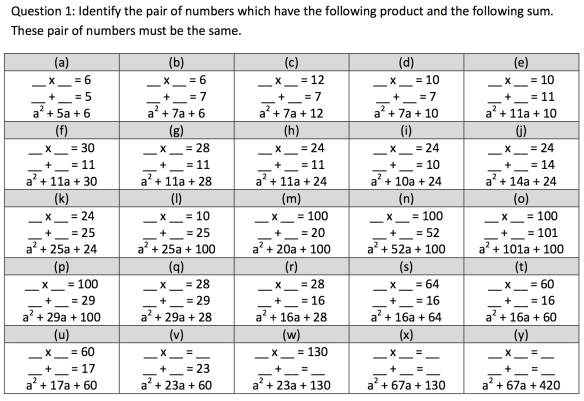I don’t know a ton about Nation of Islam. A few years ago I read Manning Marable’s biography of Malcolm X, and I left that book with an enormous admiration for Malcolm X, feeling like we’d lost a really great American. And if only for that, I’m prejudiced against Louis Farrakhan.
The other piece of context I have for Farrakhan is Freddie de Boer’s excellent essay in Harper’s, titled “The Charmer.” Here are a few of the choice bits of that essay that pertain to his anti-Semitism:
To speak of what Farrakhan gets right about racism is to risk lending credence to all he gets wrong. For just as he has been correct in his indictment of white supremacy, so too have his critics been correct in their indictments of him. Farrakhan’s ample critical gifts have always come packaged with abundant bigotries: hatred of Jews, mockery and fear of homosexuals, denigration of women. I have heard occasional attempts to deny Farrakhan’s anti-Semitism, but these defenses approach lunacy. Farrakhan’s distrust of and anger toward Jews are as central and constant as any other aspect of his philosophy; anyone reading over his speeches for examples of anti-Semitic rhetoric will quickly find herself spoiled for choice. Jews control the banks, they control the media, they control the government, Israel knew 9/11 was coming.
Why then does Farrakhan fear Jewish reprisals? For no good reason, it seems, other than his palpable anti-Jewish paranoia, along with the anti-Semite’s tendency to see one of the world’s most oppressed peoples as the shadowy driver of all events.
So let’s take for granted that Farrakhan’s anti-Semitism is not subtle or interesting in and of itself. It’s not a phenomenon that demands nuance. It just is: he’s an anti-Semite.
OK, but Tamika Mallory, national co-chair of the Women’s March, was in attendance at Farrakhan’s most recent speech. And, apparently, it’s not an isolated thing, as she’s posted about Farrakhan before on social media:
The Honorable Minister Louis Farrakhan just stepped to the mic for #SD16DET… I'm super ready… https://t.co/sNJtF2Tze1
— Tamika D. Mallory (@TamikaDMallory) February 21, 2016
Here is her defense, it seems:
The black community is very complex. We have been & continue to suffer thru incomparable circumstances. This means other ppl may not understand how we organize and all that it takes to deal with our pain. I am dedicated to bringing ppl together. However, I will not be bullied!
— Tamika D. Mallory (@TamikaDMallory) March 3, 2018
If I understand, she’s saying that whatever Farrakhan’s faults, he is an important leader. She doesn’t share his anti-Semitism (or, presumably, his deep homophobia and anti-feminism!) but she won’t refuse to associate with him or to praise him.
OK, so what’s the generalizable principle here? I think it’s: Don’t refuse to associate with or listen to or offer praise to someone who plays an important, positive, communal role, even if they have deep, disgusting faults.
Now, is her invoking this principle hypocritical? I don’t know much about Mallory, so I can’t say. It’s certainly true that e.g. Aziz Ansari didn’t get this sort of benefit of the doubt from the left, but then again that might be entirely consistent with the principle above. Ansari is, at the end of the day, an artist. Farrakhan’s faults — his paranoia and hate — may run deeper than whatever it was that Ansari was guilty of, but then again maybe it gets overridden by the Million Man March? I don’t know.
And, besides, I actually agree with that principle to a point, and wish it was more widely followed.
Is it anti-Semitism for that principle to be selectively invoked for Farrakhan but not for others? I’m not sure. Remember, Farrakhan isn’t just a hater of Jews. He’s homophobic, among other things. So the claim that Mallory and other leftists wouldn’t defend Farrakhan if he had issued hate speech about some other group…Farrakhan hates a lot of people. I’m not sure this argument really flies.
(If it does fly, it’s because of the intensity and persistence of his anti-Semitic speech, even compared to his homophobia or anti-feminism.)
So, where does that leave us? What’s at stake?
I think 95% of the emotion at play here is about whether Jews get to be counted as the oppressed or oppressors in the US today. Of course the answer could be both, and intersectionality would call for that, but in practice intersectionality is a cherry-on-top nuance over a baseline judgement: oppressed or oppressor?
Lots of Jews generally want to be seen as oppressed because of, you know, all of Jewish history.
Leftists want Jews to be seen as oppressors because they’re mostly white, and especially because of anti-Zionism.
Mallory could easily apologize for Farrakhan’s anti-Semitism, but doesn’t want to, because Jews (as oppressors) have it coming for them, just as white people do in Farrakhan’s rhetoric.
Jewish critics want to hold Mallory accountable to leftists and progressives to force a reckoning, and to extract a concession that Jews are victims of oppression.
***
And where do I stand? I think this is some of the danger of thinking too much about identity and status. Is there anti-Semitism in the US that we want to fight against? Is there an actual plan on how to protect Jews from hate crimes?
I want to avoid the sort of metaphysical issues that talk of anti-Semitism usually devolves into. I’m interested in protecting Jews from the sort of things I’m afraid of: shul shootings, terrorism, street harassment. I’m not interested in fighting anti-Semites, I’m interested in defeating anti-Semitism, and it’s not clear to me that the two are the same project.
So Farakkhan is a loony, but I don’t see much good coming from trying to take down Mallory for her association with him. The Women’s March isn’t about to add an anti-anti-Semitism plank to their work anyway.


